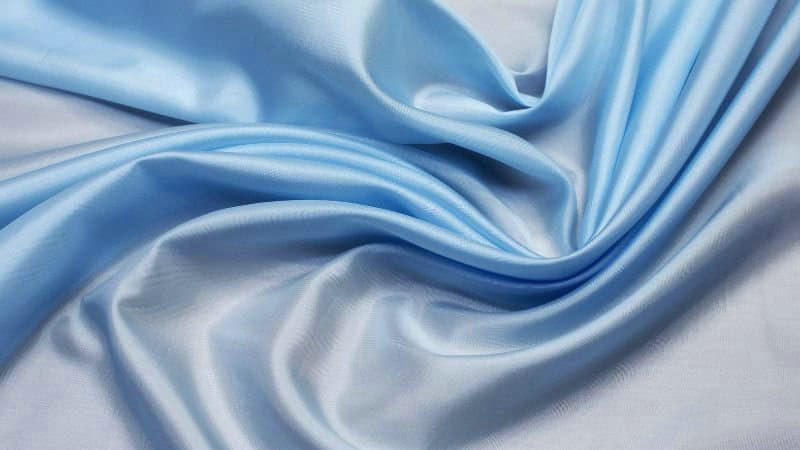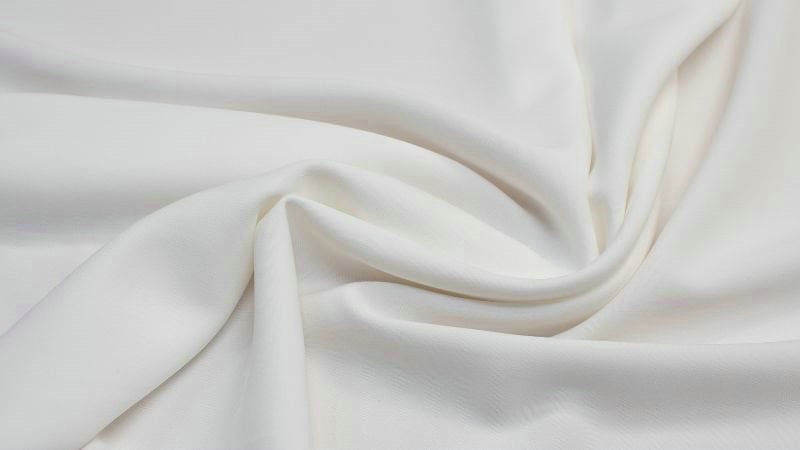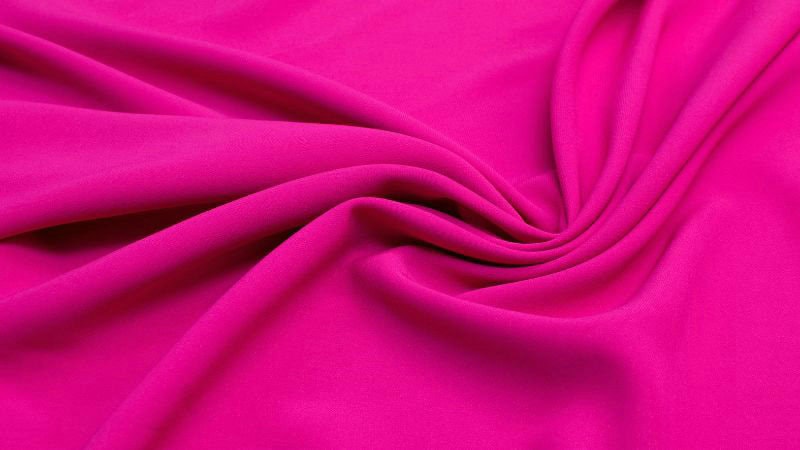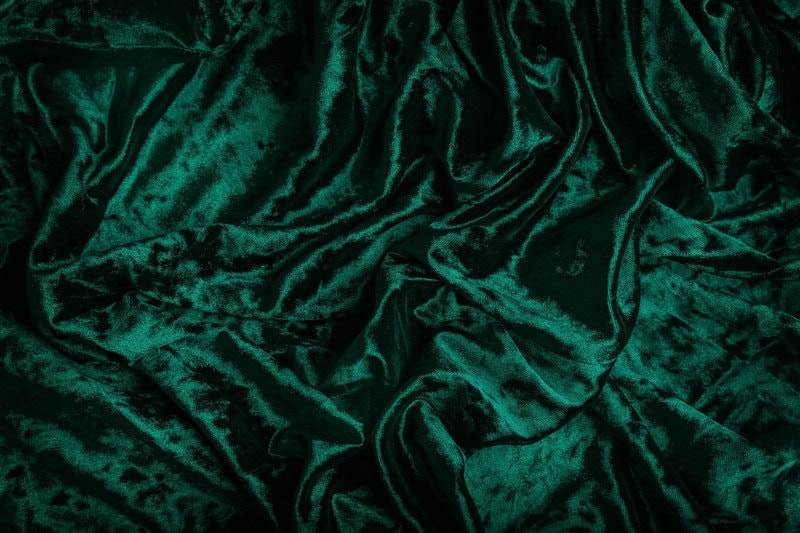Rayon, a versatile semi-synthetic fabric, has gained popularity in the fashion industry for its silky smooth texture and excellent drape. As consumers and designers alike explore the properties of different textiles, one question frequently arises: Is rayon fabric stretchy?
This article delves into the nature of rayon, examining its composition, production process, and inherent characteristics to uncover the truth about its stretchiness.
What is Rayon Fabric?

Rayon is a unique fabric. It is made from cellulose, which comes from natural sources like wood pulp. This makes rayon a semi-synthetic fabric. Unlike fully synthetic fibers, it has some characteristics of natural fabrics.
The first step in producing rayon is extracting cellulose from wood pulp or other plant sources. The cellulose is then treated with chemicals to create a viscous solution. Extruding this solution through spinnerets to form fibers and generate these fibers back into cellulose.
What are the Characteristics of Rayon?
Rayon is a soft and comfortable texture with a high absorbency (more than cotton) and does not build up static electricity.
It is breathable and can be easily dyed in vibrant colors. One thing to know about rayon is its versatility. It can mimic the feel of cotton, silk, and wool. This makes it popular in different types of clothing and textiles.
Is Rayon Fabric Stretchy?

Factors that can affect rayon’s stretch include fabric weight, weave or knit structure, finishing treatments, and fiber blends.
Rayon alone has limited elasticity. This means it’s not very stretchy if it’s 100% pure rayon. These fibers lack the natural stretch found in materials like spandex or elastic fibers.
If you need rayon to be stretchy, it’s often blended with spandex. Blended rayon fabrics—especially those with spandex—are much more elastic. This combination makes the fabric more flexible and ideal for form-fitting garments. A typical rayon-spandex blend with 5% spandex can provide a good four-way stretch.
Knit rayon fabrics are also more stretchable than woven rayon. The knitting process inherently adds more flexibility to the material.
Woven rayon, on the other hand, is much less stretchy. Most woven rayon fabrics, if at all. They do not stretch horizontally or vertically.
Compare Rayon With Other Fabrics

When comparing rayon to other fabrics, it’s less stretchy than spandex, which is known for its exceptional elasticity. Cotton offers some natural stretch but is not as elastic as spandex or nylon.
Rayon is often paired with polyester in blends, but polyester by itself doesn’t add much stretch. Polyester does add durability, helping the rayon maintain its shape.
Rayon vs. Cotton and Polyester
| Property | Rayon | Natural Fibers (e.g. Cotton) | Synthetic Fibers (e.g. Polyester) |
|---|---|---|---|
| Origin | Semi-synthetic | Natural | Fully synthetic |
| Comfort | Soft and comfortable | Soft and comfortable | Less comfortable |
| Breathability | High | High | Low to medium |
| Moisture absorption | High | High | Low |
| Durability | Low to medium | Medium to high | High |
| Wrinkle resistance | Low | Low | High |
| Environmental impact | Moderate | Low | High |
Rayon vs. Spandex
| Characteristic | Rayon | Spandex |
|---|---|---|
| Composition | Semi-synthetic, made from regenerated cellulose | Fully synthetic, made from polyurethane |
| Stretchiness | Limited natural stretch | Extremely stretchy (can stretch 5-8 times its original size) |
| Moisture absorption | Highly absorbent | Moisture-wicking |
| Breathability | Good breathability | Less breathable |
| Durability | Less durable, especially when wet | More durable, retains shape well |
| Common uses | Dresses, blouses, lightweight clothing | Athletic wear, form-fitting garments |
| Care | Often requires gentle care or dry cleaning | Machine washable |
| Environmental impact | More biodegradable | Less biodegradable |
| Softness | Very soft | Less soft, more elastic feel |
| Drape | Excellent drape | Less drape, more clingy |
What Should Be Considered When Buying Rayon Fabrics?

Environmental Impact and Sustainability
Rayon is made from cellulose, often from wood pulp like pine or bamboo. The process uses chemicals, raising concerns about factory pollution. Viscose rayon, a common type, involves harsh chemicals that can harm waterways if not handled properly.
Some types, like high wet modulus rayon, are designed to be environmentally friendlier. This means they are produced in ways that use fewer harsh chemicals.
Because rayon is generally made from renewable resources, it can be more sustainable than synthetic fibers. However, always check if the brand you’re buying from uses eco-friendly processes.
Durability and Longevity
Regular rayon can be weak when wet, causing it to shrink or stretch if not handled with care. Dry cleaning or gentle hand washing is recommended to maintain its quality.
High wet modulus rayon is stronger and doesn’t stretch or shrink as easily when wet. This makes it a better choice if durability is a key concern for you.
Be cautious with rayon clothing, as it can wrinkle and is flammable. Using a fabric conditioner can help keep rayon garments soft and lustrous.
Frequently Asked Questions
How does the stretchiness of rayon fabric compare to that of cotton?
Rayon tends to be less stretchy than cotton. Unlike rayon, cotton can have a natural elasticity, especially in knit fabrics.
Can rayon fabric provide a comfortable fit for tight jeans?
Rayon alone may not be great for tight jeans. However, it can offer a comfortable and snug fit when blended with spandex.
What impact does the addition of spandex fabric have on the elasticity of rayon fabrics?
Adding spandex to rayon significantly increases its stretchability. This blend makes the fabric more flexible and comfortable to wear, especially for activewear.
Does wearing rayon clothing result in it clinging to the body?
Rayon can cling to the body, especially when it’s humid or if the garment is very fitted. Combining it with spandex can also make it more form-fitting.
What can one expect in terms of texture and flexibility when choosing rayon garments?
Rayon provides a soft and smooth texture. Its flexibility increases when mixed with other stretchy fibers like spandex, making it a popular choice for comfortable, wearable clothing.







